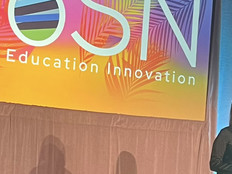Considerate Scheduling Helps Educators Complete PD Year-Round
School leaders should consult district initiatives and similar documents when planning PD for the coming year. This ties development to learning goals and gives leaders a North Star to follow.
In creating a professional development calendar, it’s the responsibility of the administrator to plan PD appropriately around the busy season. This means educators shouldn’t have required PD around holidays or the week before or during testing.
Admins can also take community events into consideration. For example, if the school football team is going to the playoffs or having a pep rally, leaders may consider rescheduling PD.
READ THE INTERVIEW: One superintendent shares how tech partnerships power his district.
Admins Can Build In Time for PD
There are other ways school administrators can ensure educators have the time to complete professional development. They can schedule PD in a way that allows educators to prioritize it while still completing necessary administrative tasks. If there are two team meetings a month, admins can address business needs in the first meeting so the second meeting focuses on PD.
Because knowledge sharing and practicing the new skills learned in PD is an important part of integrating skills into everyday practice, principals should work with their assistant principals and other leaders in their districts to provide educators time to lesson plan. Covering classes is another way to help teachers find time, and it also can allow them to shadow their peers in other classrooms or complete asynchronous trainings.
MORE ON EDTECH: Administrators share how tech drives future-ready learning.
Leaders Should Recognize Educator Accomplishments
Principals, superintendents and other district-level leaders aren’t the only ones capable of supporting educators’ continued professional development. The Arizona Department of Education is working on a digital badge program for educational technology PD. It aims to provide educators with badges for completing a certain number of hours of relevant PD, which educators could feature on the resumes.
The Arizona DOE’s initiative highlights the importance of leaders knowing what educators are doing. Many educators are seeking their own professional development through courses, conferences and certifications, and recognizing their commitment to education can go a long way. That recognition could look like a laptop sticker, a badge for their classroom window or having them share learnings during a future staff meeting.
When admins know their staff members’ capabilities, it allows them to share these learnings with their peers. Information shared at principals’ meetings and similar forums can quickly lead to knowledge sharing in the community at large, which makes learning more accessible for everyone.
This article is part of the “ConnectIT: Bridging the Gap Between Education and Technology” series. Please join the discussion on Twitter by using the #ConnectIT hashtag.






![[title]Connect IT: Bridging the Gap Between Education and Technology](http://www.edtechmagazine.com/k12/sites/default/files/articles/2014/05/connectit.jpg)




